The Pearl Gourami, scientifically known as Trichopodus leerii, is one of the most graceful and visually appealing freshwater fish in the aquarium hobby. Native to the warm waters of Southeast Asia, these fish captivate enthusiasts with their intricate pearl-like patterning across their bodies, hence their name.
Notably, they possess a unique labyrinth organ, allowing them to breathe atmospheric air. This feature is not only rare among aquarium fish but also aids them in surviving in low-oxygen environments in their natural habitat. As a result, they are incredibly resilient and adaptable.
Table of Contents

Species Overview
| Pearl Gourami Fact: | Details: |
| Scientific Name: | Trichopodus leerii |
| Common Names: | Pearl Gourami, Lace Gourami, Leeri Gourami |
| Care Level: | Easy to Moderate |
| Native Region: | Freshwater rivers and swamps of Southeast Asia |
| Lifespan: | Up to 5 years in optimal conditions |
| Size: | Up to 12 centimetres |
| Family: | Osphronemidae |
| Diet: | Omnivore |
| Minimum Tank Size: | 120 litres |
| Compatibility: | Peaceful community tanks |
Characteristics & Appearance
The Pearl Gourami stands out with its unique and striking aesthetics, making it a favourite among fish keepers. Typically, an adult Pearl Gourami reaches a size of about 12 centimetres. Their bodies exhibit a soft, silver hue adorned with a mosaic of iridescent spots, evoking an image of pearls, from which they derive their name.
The male, during courting or when displaying territorial behaviour, showcases a rich, burnt-orange hue on the throat and belly regions. A distinguishing feature is the dark longitudinal line that runs from the mouth to the base of the tail.
Origin and Distribution
The Pearl Gourami hails from the freshwater bodies of Southeast Asia. Specifically, they are indigenous to Thailand, Malaysia, and the Indonesian islands, with a significant population found in the swampy areas and lowland wetlands. These regions typically have densely vegetated, slow-moving or still waters, offering the fish an ideal setting full of hiding spots and rich food sources.
The Pearl Gourami’s unique ability to breathe atmospheric air through its labyrinth organ is an adaptation to these environments, which can occasionally have low oxygen levels. It’s worth noting that due to habitat loss and increased demand in the aquarium trade, there have been concerns about their natural population.
However, many aquarium specimens today are bred in captivity, ensuring sustainable numbers for enthusiasts.
Lifespan
The Pearl Gourami, with proper care and optimal tank conditions, boasts an impressive lifespan for a freshwater fish. Typically, they live between 5 to 8 years in captivity. Their longevity is testament to their resilience and adaptability, making them a rewarding choice for aquarists seeking both beauty and a long-term aquatic companion. 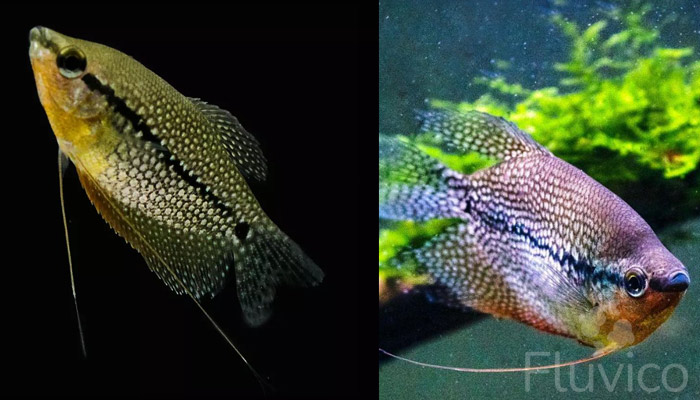
Gender Differences
Distinguishing between male and female Pearl Gouramis is relatively straightforward for the discerning aquarist. Males tend to be more vibrantly coloured, especially during courtship, exhibiting a pronounced burnt-orange hue on their throat and belly. Additionally, males possess a more pointed dorsal fin, while females have a rounded one.
The females are often slightly plumper, especially when carrying eggs. Recognising these gender differences can aid aquarists in breeding or simply understanding their aquarium dynamics better.
Behaviour & Temperament
Typical Behaviour
The Pearl Gourami, by nature, is a peaceful and somewhat shy fish. They are often seen cruising gracefully in the middle to top layers of the aquarium, especially during the early and late hours of the day. Their labyrinth organ enables them to occasionally gulp atmospheric air from the water surface.
While generally sociable with tankmates, males can display territorial tendencies, especially during breeding seasons. It’s not uncommon for them to establish their own zones in the tank.
Providing ample vegetation and hiding spots can help in mitigating any potential stress or aggression, ensuring harmonious coexistence in a community setup.

Keeping Pearl Gourami Together
When housing multiple Pearl Gouramis together, it’s crucial to ensure ample space to avoid territorial disputes, especially among males. A balanced gender ratio, preferably more females than males, can reduce potential conflicts. Providing densely planted areas and hiding spots further promotes harmony.
While they are generally peaceful, during breeding, males can become assertive, so monitoring their interactions is advisable.
Pearl Gourami Habitat and Care
Tank Requirements
Creating the perfect environment for Pearl Gouramis requires a thoughtful approach that mimics their natural habitat.
- Tank Size: A minimum of 120 litres is advisable for a pair. Larger spaces reduce stress and allow for natural behaviour.
- Temperature: Optimal range is between 24°C to 28°C.
- pH Levels: Slightly acidic to neutral conditions, around 6.0 to 7.5, are ideal.
- Lighting: Moderate lighting complements their natural habitat, but ensure some shaded areas using aquatic plants.
- Water Hardness: Soft to moderately hard water, within 5 to 15 dGH, benefits their health and longevity.
- Substrate: Fine sand or small, rounded gravel is preferable, mimicking their natural riverbed environment.
- Vegetation: Densely planted areas with a mix of floating and rooted plants offer refuge and mimic their natural surroundings.
- Filtration: Gentle water flow replicates the slow-moving waters they’re accustomed to, so avoid overly powerful filters.
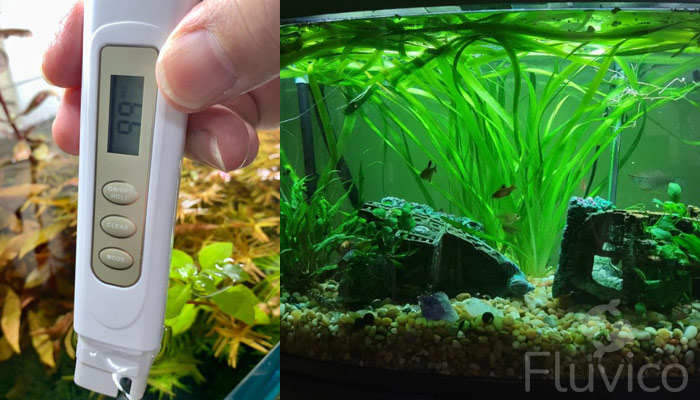
Compatible Plants and Décor
Ensuring a harmonious environment for Pearl Gourami’s goes beyond just tank mates and water parameters. Introducing compatible plants and décor not only enhances the visual appeal of your aquarium but also provides essential hiding places and comfort zones for these fish. Here’s a guide to compatible plants and décor:
Plants:
- Java Fern: Hardy and requiring minimal light, it’s a favourite in many Gourami tanks.
- Hornwort: This floating plant provides shade and is excellent for Pearl Gouramis who love hovering near the surface.
- Water Sprite: Its fine leaves are perfect for Pearl Gouramis to navigate around, and it also aids in maintaining water quality.
- Anubias: These can be tied to driftwood or stones, providing both shelter and aesthetic appeal.
- Amazon Sword: Its broad leaves offer a refuge and a potential site for laying eggs.
Décor:
- Driftwood: Apart from lending a natural look, driftwood provides hiding spaces and can slightly acidify water, benefiting the Gouramis.
- Rocks & Caves: Ensure they have smooth edges to prevent injury. They act as territorial markers and hiding spots.
- Leaf Litter: Using dried leaves like Indian almond leaves not only mimics their natural habitat but also releases tannins, which have beneficial properties.
- Floating Logs: Available at many pet stores, these provide a shaded area near the surface, a favourite spot for Gouramis.
- Smooth Pebbles: For substrate, these can help in mimicking the riverbed environment and are easy to clean.

Diet and Feeding
For Pearl Gouramis to thrive and display their most vibrant colours, a well-rounded diet and proper feeding regimen are essential. While they are generally not picky eaters, meeting their nutritional needs ensures a healthy, active life.
Diet:
- Flake Foods: High-quality tropical flake food can serve as a staple in their diet, meeting many of their nutritional needs.
- Live Foods: Offering brine shrimp, bloodworms, and daphnia periodically can be a treat and provides necessary proteins.
- Frozen Foods: These can be an alternative to live foods, offering variety while being more convenient and often safer.
- Pellets: Specially formulated pellets for Gouramis ensure they receive all essential nutrients.
- Vegetables: Blanched spinach or lettuce, as well as peas (skins removed), provide necessary fibres and micronutrients.
Feeding Recommendations:
- Frequency: Feed them once or twice daily, ensuring they consume all the food within 2-3 minutes.
- Variety: Rotate their diet to prevent nutritional deficiencies and keep them interested.
- Overfeeding: Avoid it as it can lead to health issues and also deteriorate water quality.
- Observation: Watch their feeding habits. If they suddenly stop eating or show changes in appetite, it could be a sign of stress or illness.
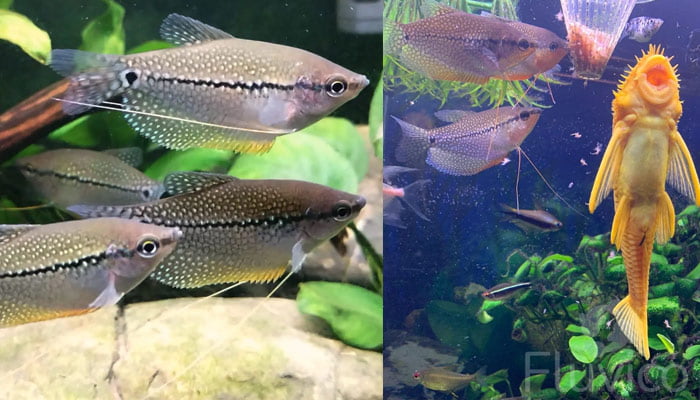
Tank Mates and Compatibility
Ensuring harmonious cohabitation in an aquarium involves selecting tank mates wisely. Pearl Gouramis are generally peaceful fish, but not all species are compatible with them. Suitable Tank Mates:
- Small Tetras: Such as neon or cardinal tetras, these schooling fish are non-aggressive and share similar water requirements.
- Corydoras Catfish: Peaceful bottom dwellers that won’t disturb the Pearl Gourami.
- Dwarf Gouramis: They can coexist well if there’s enough space.
- Hatchetfish: These surface-dwelling fish are calm and won’t compete for territory.
- Livebearers: Such as mollies, platies, and guppies.
What to Avoid:
- Rainbow Shark: This species can be territorial and might chase Gouramis. A larger tank with hiding spots can mitigate potential conflicts.
- Red Tail Shark: Similarly territorial, it can coexist in spacious setups but monitor for aggression.
- Large Cichlids: Species like the Oscar can be aggressive and may view Gouramis as prey.
- Betta Fish: Known for their territorial nature, they can clash with Gouramis, especially in limited spaces.
- Aggressive Barbs: Such as the Tiger Barb, known to nip at the long fins of Gouramis.
- Other Territorial Sharks: Including the Bala Shark, which can become aggressive in confined spaces.
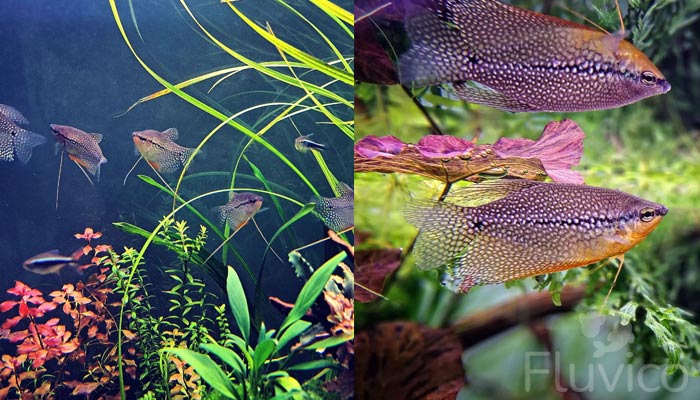
Common Health Concerns:
- Ich (White Spot Disease): Identified by small white spots on the skin, fins, and gills. Fish may also scratch against objects.
- Fin Rot: Deterioration or fraying of the fins, often turning them milky or white at the edges.
- Dropsy: A bacterial infection that causes the fish to bloat, and its scales to protrude.
- Gill Flukes: Parasitic infestation causing difficulty in breathing, excess mucus on gills, and visible reddening.
- Swim Bladder Disease: Fish struggle to maintain their balance, often floating upside-down or sideways.
What to Look Out For:
- Lethargy: Inactivity or staying at the bottom of the tank can be an early sign of distress or illness.
- Loss of Appetite: If a normally voracious Pearl Gourami suddenly stops eating, it can signal health issues.
- Changes in Appearance: Any unusual spots, growths, or discolorations should be noted.
- Rapid Breathing: A sign of potential water quality issues or gill diseases.
- Erratic Behaviour: Darting around the tank, scratching against surfaces, or any abnormal behaviour can indicate parasites or other illnesses.
Preventative Measures:
- Quarantine New Fish: Before adding new fish to your main aquarium, keep them in a separate tank for a couple of weeks to observe for potential diseases.
- Maintain Water Quality: Regularly test the water parameters and change it routinely. Most illnesses are often due to poor water conditions.
- Avoid Overfeeding: This can pollute the water and contribute to digestive problems.
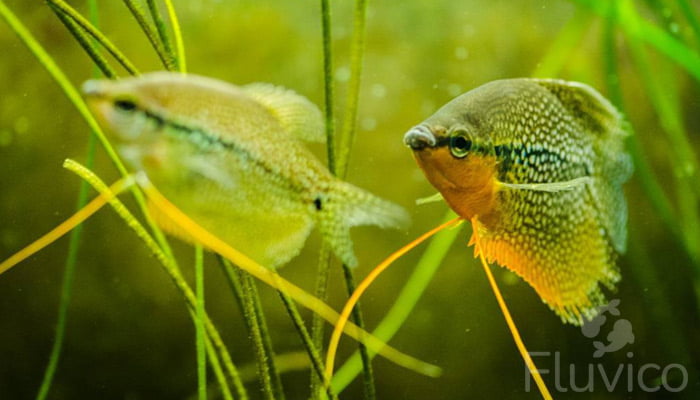
Breeding the Pearl Gourami
Breeding Pearl Gouramis can require patience and attention to detail. It’s essential to monitor the fry’s development closely and ensure that they receive the proper nutrition for healthy growth.
Total Time: About 2-3 months (or 10 weeks)
1. Separate Breeding Tank:
Set up a separate breeding tank of at least 40 litres, with a water depth of 15-20cm in a dimly lit environment and maintain a temperature of 28°C to 30°C and a pH level of 6 to 6.5.
2. Floating Plants:
Introduce floating plants or breeding mops. Male Pearl Gouramis will use these to build bubble nests.
3. Condition the Breeding Pair:
For 1-2 weeks, feed the chosen breeding pair live or frozen foods like brine shrimp, bloodworms, or daphnia to condition them.
4. Introduce the Breeding Pair:
Add the conditioned male and female to the breeding tank.
The male will start building a bubble nest under the floating plants or mops
5. Mating Signs:
The male will court the female by swimming around her and flaring his fins.
If she’s receptive, she’ll approach the bubble nest, and the male will wrap around her in an embrace. This is when the eggs are fertilised.
6. Egg Transfer:
After spawning, the female will release the eggs, which will be taken to the bubble nest by the male.
This process may repeat several times until the female has released all her eggs.
7. Separate the Adults:
Once breeding is complete, remove the adult fish to prevent them from eating the eggs or the fry.
8. Egg Hatching:
In about 24-36 hours, the eggs will hatch into fry.
They will feed off their yolk sacs for the next 2-3 days.
9. Feeding the Fry:
Once the fry becomes free-swimming, feed them infusoria or commercial liquid fry food.
As they grow, transition them to newly hatched brine shrimp or micro-worms.
10. Gradual Growth:
When the fry grow larger, move them to a bigger tank.
Continue feeding with more substantial foods until they’re large enough to eat regular fish food.
Regular water changes are crucial during this period.
Ensure the water parameters remain stable to give the fry the best chance of survival.
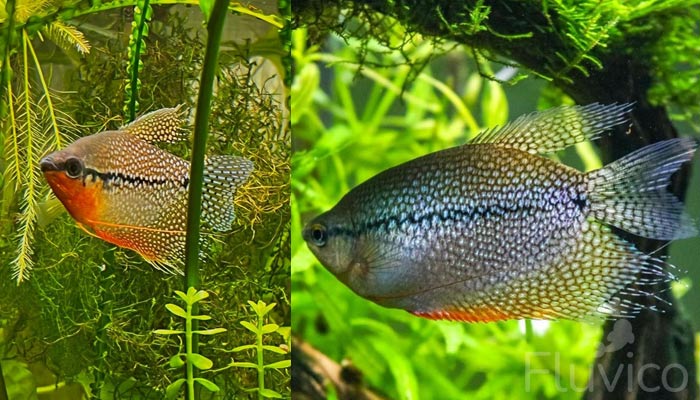
Is Pearl Gourami Right for Your Aquarium?
Deciding if the Pearl Gourami is the right fit for your aquarium requires careful consideration. While they are stunning and generally peaceful fish, they have specific needs and temperaments. Let’s delve into factors to help you make an informed choice: Advantages of Keeping Pearl Gouramis:
- Visual Appeal: Their intricate pearl-like patterns and delicate fins make them one of the more attractive freshwater species.
- Peaceful Nature: They generally get along well with other non-aggressive tankmates, making them suitable for community setups.
- Hardiness: Once acclimated, Pearl Gouramis can be quite resilient and adaptable to various water conditions, making them suitable for both novices and experienced aquarists.
Factors to Consider:
- Tank Size: They need a minimum of 120 litres to thrive. Ensure you have enough space for them to swim and explore.
- Water Parameters: While adaptable, they prefer slightly acidic to neutral pH and specific temperature ranges.
- Diet: A varied diet is essential for their well-being. Are you prepared to provide live, frozen, and high-quality flaked food?
- Tankmates: Their peaceful nature means they can be bullied by more aggressive species. Ensure you can provide a harmonious environment.
- Breeding: Males can become territorial during breeding. If you plan to breed, do you have provisions for separation or a breeding tank?
Potential Challenges:
- Health Concerns: Like all fish, they’re prone to diseases if not provided with optimal conditions.
- Longevity: With a lifespan of up to 5 years, are you prepared for a long-term commitment?
In conclusion, while Pearl Gouramis can be a joy to keep and observe, they aren’t suitable for every aquarium. Assess your current setup, your willingness to meet their needs, and your long-term plans before introducing them to your aquatic family.
FAQ
Do Pearl Gouramis need to be in pairs?
No, Pearl Gouramis don’t necessarily need to be in pairs. However, keeping them in groups can reduce aggression and make them feel more at ease in their environment.
How many Pearl Gourami can be kept together?
Pearl Gouramis are peaceful and amiable, blending well with fellow aquarium inhabitants. However, males can display heightened aggression during breeding seasons. Thus, when considering multiple Pearl Gouramis, it’s advisable to maintain a group with one male and several females, a guideline applicable to many species.
Are Pearl Gouramis good community fish?
Yes, Pearl Gouramis are good community fish, known for their peaceful nature. They coexist well with other non-aggressive tankmates, making them a popular choice for community aquariums.
Can Pearl Gouramis live with Tetras?
Yes, Pearl Gouramis can live with Tetras. Both species are generally peaceful, making them compatible tankmates in a well-maintained community aquarium.
Why are my Pearl Gouramis kissing?
Pearl Gouramis “kissing” is often a sign of territorial disputes or dominance displays, not affection. This behaviour, called “lip-locking,” is a way for them to establish hierarchy or compete for territory within the tank.
More Reading

15 Types of Cryptocoryne: Which is Best For Your Aquarium Setup?

16 Awesome Low Light Aquarium Plants (Mosses, Ferns & Stem Plants)


18 Types of Aquarium Moss: Photos, Care, Propagation & Growth Guide
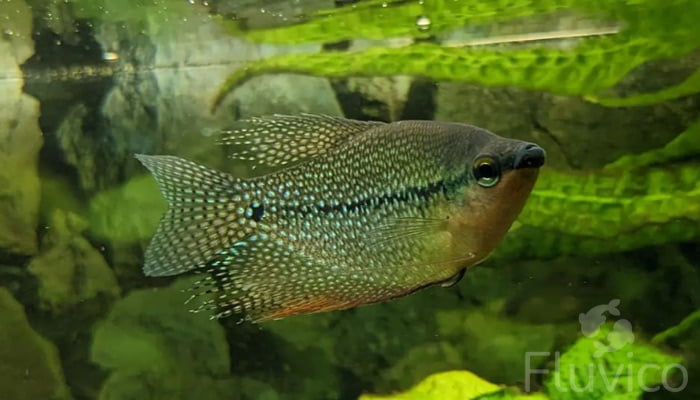
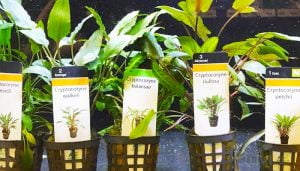
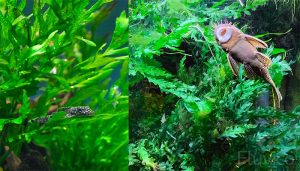


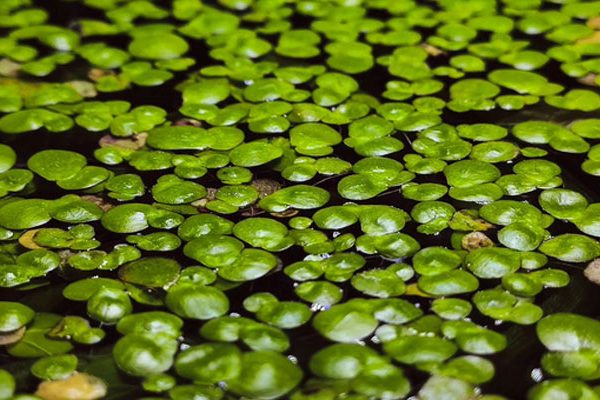
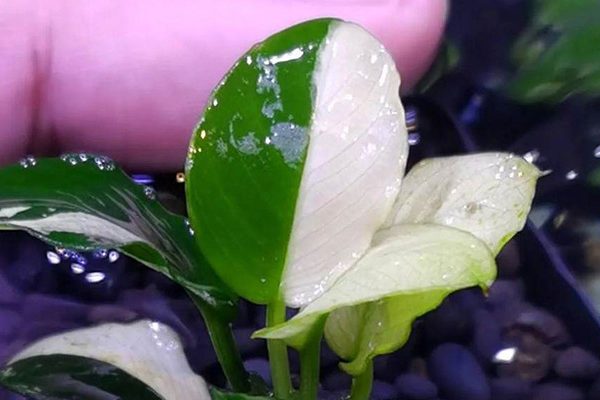
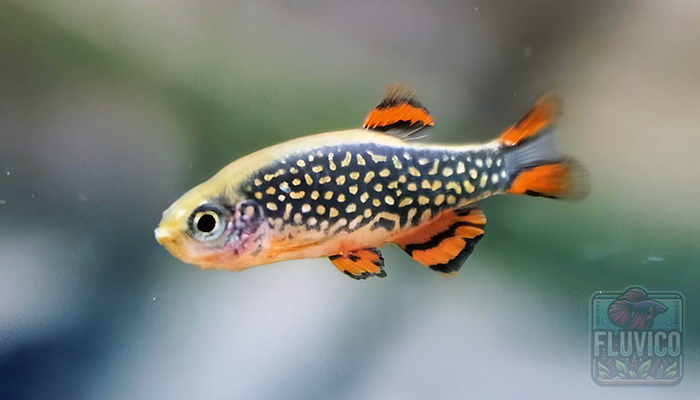
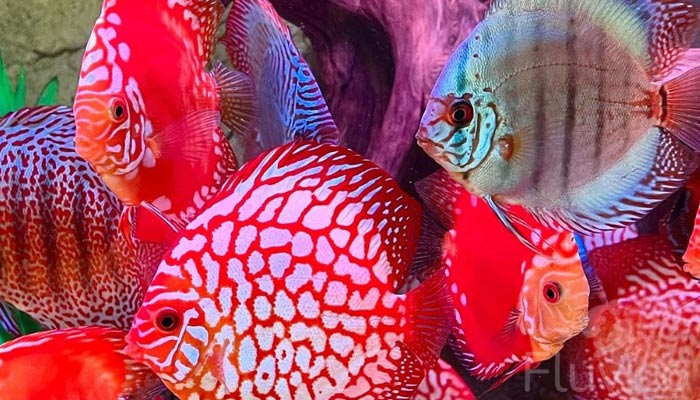
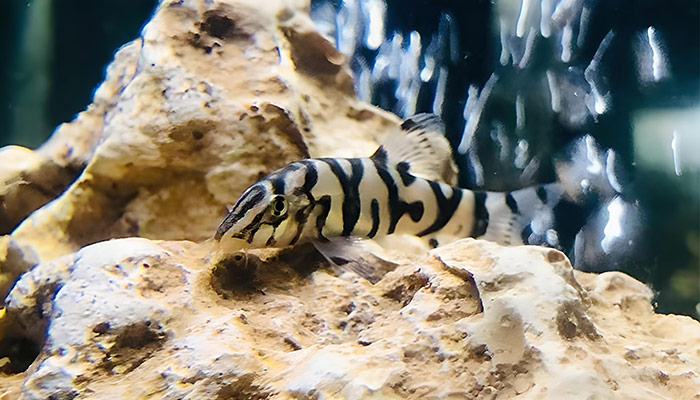

Hope you enjoyed our Peal Gourami Care Guide!
If you have any questions? Ask away, we’re here to help!
All the best,
Daniel